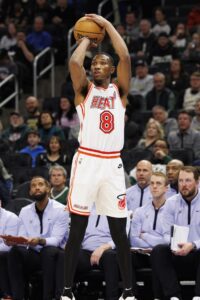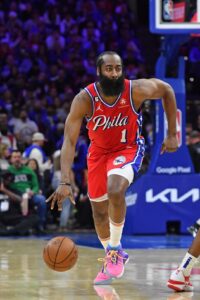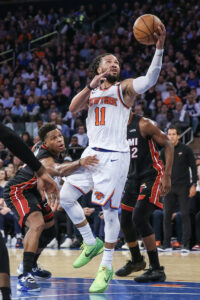As of July 18, there were 12 two-way restricted free agents who had yet to sign new contracts.
Over the past three-plus weeks, six of those players — Lester Quinones (Warriors), Kendall Brown (Pacers), Trevor Keels (Knicks), Duane Washington (Knicks), Dominick Barlow (Spurs) and Ron Harper Jr. (Raptors) — returned to their clubs on two-way deals.
Keels and Washington were subsequently waived to create roster space for Nathan Knight and Dylan Windler, respectively. Washington re-signed with New York on a training camp contract, while Keels is an NBA free agent (the Knicks retained his G League rights).
A seventh player — Jeff Dowtin — returned to Toronto on a one-year, minimum-salary contract that is fully non-guaranteed. He would receive $900K if he’s not waived on or before October 21, but may face an uphill battle to claim a roster spot, as the Raptors now have 15 players with guaranteed deals on their roster.
That leaves a total of five two-way restricted free agents available, as our up-to-date list shows. Those players are as follows:
 Trent Forrest, G, Hawks
Trent Forrest, G, Hawks- Theo Maledon, G, Hornets
- Jamal Cain, F, Heat
- Matt Ryan, F, Timberwolves
- Terry Taylor, F, Bulls
Of the five-player group, Maledon had the largest role last season. The 34th pick of the 2020 draft appeared in 44 games for Charlotte in 2022/23, averaging 6.7 points, 3.5 assists and 2.8 rebounds in 19.4 minutes per game.
If they’re willing to accept their one-year, two-way qualifying offers, four of these five players seemingly have an easy path back to the teams that hold their rights — the Hawks, Hornets, Heat and Wolves all have an open two-way slot available.
That is not true for the Bulls, however — all three of their two-way slots are filled. If Taylor accepts his QO, Chicago might just release him, similar to what happened with Washington and Keels.
Some two-way RFAs have managed to earn standard contracts this offseason. Cain has reportedly been discussing that possibility with rival teams, but Miami has been reluctant to give him a standard deal.
It will be interesting to see if any of the five players are able to land a standard contract instead of another two-way deal. However, being RFAs hurts their leverage to negotiate with rival teams, and offer sheets for two-way restricted free agents essentially never happen.
 As similar as the two situations are, there are two key factors that differentiate them.
As similar as the two situations are, there are two key factors that differentiate them.
